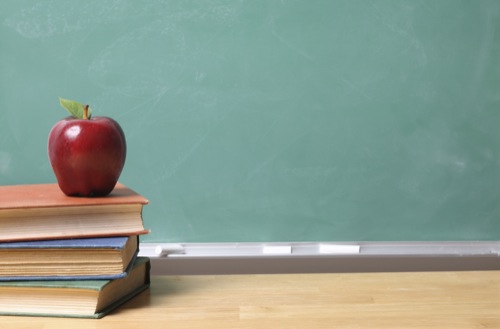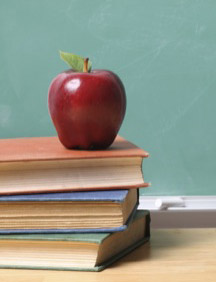 BY DEBRA RINGOLD | OB GUEST CONTRIBUTOR
BY DEBRA RINGOLD | OB GUEST CONTRIBUTOR
Since 1970 the performance of our public education system has steadily deteriorated.
 BY DEBRA RINGOLD | OB GUEST CONTRIBUTOR
BY DEBRA RINGOLD | OB GUEST CONTRIBUTOR
“Historically, the U.S. education system has had an outstanding record. It was the first country to achieve universal elementary education, the first to expand its secondary system so as to include the vast majority of students, and the first to establish a broadly encompassing, highly competitive, and world-renowned system of higher education. As late as 1970, a higher percentage of U.S. young people completed their secondary education than did their peers in any other country in the world.”[1]
However, since 1970 the performance of our public education system has steadily deteriorated. By 2009, 26% of the nation’s high school seniors performed at or above “proficient” on the US Department of Education’s 12th-grade mathematics assessment. That same year, 38% of the nation’s high school seniors performed at or above “proficient” in reading. In 2011, 24% of high school seniors were deemed at or above “proficient” in writing. Nonetheless, according to the US Bureau of Labor Statistics, about two-thirds of all high school graduates enroll in undergraduate programs.
With respect to 2013 SAT takers, the College Board reports that fewer than half graduated from high school academically prepared for the rigors of college-level course work. This number of underprepared SAT takers has remained virtually unchanged during the last five years. Yet, according to the National Center for Educational Statistics (NCES), undergraduate enrollments continue to increase—37% between 2000 and 2010.
Not surprising, graduation rates from undergraduate programs are disappointing. According to the most recent data available from the NCES College Navigator web pages, Oregon’s three largest public institutions of higher learning—Oregon State University, Portland State University, and University of Oregon— have four-year graduation rates of 31%, 15% and 44%respectively. After six years these graduation rates improve to 61 percent, 39 percent, and 68 percent, respectively.
The purpose of undergraduate education is to learn to read critically, write and speak fluently, and think for oneself. Skills necessary to the acquisition of knowledge, comprehension, application, analysis, synthesis, and evaluation can be developed across contexts and disciplines, but are clearly distinct from, and arguably necessary to, professional education. A liberal education is focused on process not content per se.
Professional education is focused on mastery of particular occupational or vocational content and assumes the ability to read, write, speak, and think.
Undergraduate programs that attempt to do both, that is, teach people to read, write, speak, and think and master an occupational domain have their work cut out for them. Can we reasonably expect our public universities’ undergraduate curricula to remediate the considerable shortcomings of our students’ K-12 preparation, refine students’ abilities to read, write, speak, and think, and achieve professional mastery? My experience is that most undergraduate business programs fail to remediate the shortcomings of K-12, fail to provide a liberal education, and fail to adequately prepare people for the technical and managerial requirements of business.
Arguably, the merits of a liberal education—read, write, speak, think—are more important than ever before. Public universities could take on this role rather than continuing to allow, and even encourage, a steady gravitation to vocational undergraduate education. Public undergraduate education could replicate, for all students, what it accomplishes in its honors colleges—intimate, high quality academic instruction and internaction with members of the faculty and well prepared peers.
But, increasing class sizes, infrequently offered courses, on-line course delivery, and the like work at cross purposes with an honors college model. In an interview with the OSU Daily Barometer last summer, Lisa Templeton, Executive Director of OSU’s Extended Campus programs suggested that on-line courses are a convenient substitute for on-campus coursework by resident students. “Some courses fill up pretty quickly,” Templeton said. “And for students, [Ecampus] is a really great resource…it’s kind of a solution, if they want to get into a course and it’s full on campus, they’re opting for an online course often.”
There is a role for vocational training in our universities. Law, medicine, management, journalism, and other occupational domains should be the focus of graduate professional education. In the six years it takes the majority of our public university undergraduates to complete a bachelor degree they should be able to complete a bachelor’s degree and most master’s degrees.
So what does all of this mean for institutions of higher learning nationally and here in Oregon? One approach is to raise admission standards, reduce the number of admitted students to those who are academically prepared for college, and focus on improving four-year graduation rates without reducing the rigor of the curriculum. We could return to an undergraduate emphasis on liberal arts and reserve professional training to the graduate ranks. This would send a very strong signal to K-12. It would slow the growth of our overbuilt university systems. It would increase the economic premium associated with a college degree. Most important, it has the potential to improve the quality of undergraduate education and the lives of the students who complete it.
[1]Peterson, Paul E. (2003), “Little Gain in Student Achievement,” in Our Schools and Our Future: Are We Still at Risk? Stanford, CA: Hoover Press, 39-72.
Debra Ringold is Dean and JELD WEN Professor of Free Enterprise in the Atkinson Graduate School of Management at Willamette University.

 BY DEBRA RINGOLD | OB GUEST CONTRIBUTOR
BY DEBRA RINGOLD | OB GUEST CONTRIBUTOR